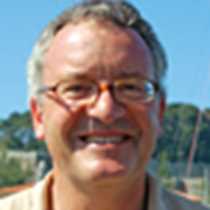St. Kilda
It was tourism, amongst other things that did for St. Kilda. Continuous occupation of this, the remotest island in the British Isles, had been unbroken from the New Stone Age through to 1930, when the islanders requested their own evacuation to the mainland. The beginning of the end for this proud Gaelic-speaking community came, ironically, with the arrival of a succession of ministers and schoolteachers who imposed so strict a sabbatarian regime on the islanders that severely disrupted their work patterns. They also wished to replace Gaelic with English, widely assumed to be the language of progress. By the 1850s, enough of the islanders were sufficiently confident in their English to abandoned their north Atlantic home (and the tyranny of Calvinism) to seek a new life in Australia.
It was in 1877 that the Dunara Castle made its maiden voyage to St Kilda, the first of a succession of voyages from Glasgow to St Kilda bringing bemused (and frequently amused) tourists to gape in astonishment at the time-warp of island life. It was not long before the tourists were paying the locals to have their photos taken and bringing over tinned food and other commodities from the mainland previously unseen and untasted. Hunting and gathering were abandoned and island traditions, such as the rock-climbing of the Cragsmen, was now only undertaken for payment when the tourist boats arrived.
The continuity of island life had thus been essentially broken well before the influenza epidemic of the winter of 1929 that cost the island community four lives and finally its heart. At the last meeting of the island “parliament” on the main street it was agreed to request evacuation from the government in London.
Today the island is managed by the National Trust for Scotland. Several of the abandoned houses have been restored adding to the poignancy of our morning stroll through the deserted village. The colonies of seabirds and Soay sheep survive from an earlier age and we endeavoured to leave the island as we had found it: a microcosm of pristine landscape illustrating the interaction of man and nature over several millennia.
It was tourism, amongst other things that did for St. Kilda. Continuous occupation of this, the remotest island in the British Isles, had been unbroken from the New Stone Age through to 1930, when the islanders requested their own evacuation to the mainland. The beginning of the end for this proud Gaelic-speaking community came, ironically, with the arrival of a succession of ministers and schoolteachers who imposed so strict a sabbatarian regime on the islanders that severely disrupted their work patterns. They also wished to replace Gaelic with English, widely assumed to be the language of progress. By the 1850s, enough of the islanders were sufficiently confident in their English to abandoned their north Atlantic home (and the tyranny of Calvinism) to seek a new life in Australia.
It was in 1877 that the Dunara Castle made its maiden voyage to St Kilda, the first of a succession of voyages from Glasgow to St Kilda bringing bemused (and frequently amused) tourists to gape in astonishment at the time-warp of island life. It was not long before the tourists were paying the locals to have their photos taken and bringing over tinned food and other commodities from the mainland previously unseen and untasted. Hunting and gathering were abandoned and island traditions, such as the rock-climbing of the Cragsmen, was now only undertaken for payment when the tourist boats arrived.
The continuity of island life had thus been essentially broken well before the influenza epidemic of the winter of 1929 that cost the island community four lives and finally its heart. At the last meeting of the island “parliament” on the main street it was agreed to request evacuation from the government in London.
Today the island is managed by the National Trust for Scotland. Several of the abandoned houses have been restored adding to the poignancy of our morning stroll through the deserted village. The colonies of seabirds and Soay sheep survive from an earlier age and we endeavoured to leave the island as we had found it: a microcosm of pristine landscape illustrating the interaction of man and nature over several millennia.




